NRAO eNews
Volume 5, Issue 5 • May 3, 2012
Upcoming Events
 ALMA Cycle 1 Notice of Intent Deadline
ALMA Cycle 1 Notice of Intent Deadline
May 15, 2012
 Synthesis Imaging Workshop
Synthesis Imaging Workshop
May 29 - Jun 5, 2012 | Socorro, NM
 Proposal Preparation Training
Proposal Preparation Training
Jun 11-12, 2012 | Charlottesville, VA
 ALMA Early Science Results & Opportunities
ALMA Early Science Results & Opportunities
Jun 14, 2012 | Anchorage, AK
 CASPER Workshop
CASPER Workshop
August 13-18, 2012 | Green Bank, WV
Parting Thoughts
Fred K. Y. Lo

As you read this, it will be within 3 weeks of my stepping down as NRAO Director. My nearly 10 years of tenure as Director have been interesting, challenging, and ultimately rewarding. I certainly feel honored and privileged to have served as the fifth Director of the NRAO in its 56 years of history.
When I became Director in September 2002, NRAO comprised four largely independent sites: Tucson AZ, Socorro NM, Green Bank WV, and Charlottesville VA. The Expanded Very Large Array project was preparing to start. The Atacama Large Millimeter/submillimeter Array (ALMA) was still in the development phase and many NRAO staff members were still feeling their way on how best to approach it because it was not entirely a project of the NRAO. And, I still recall, the first news I received as Director was that the Green Bank Telescope (GBT) track was failing prematurely. It instantly conjured up in my mind a heap of metal on the ground, similar to the collapsed 300-foot telescope in November 1988.
In 2012, after nearly ten years of hard work by the NRAO staff and our international partners, both the re-dedicated Jansky Very Large Array and ALMA are on track to be completed to meet specifications, on time, and on budget. Early science on both facilities has already produced outstanding results. A completely new unit within the NRAO, the North American ALMA Science Center (NAASC), is doing an excellent job supporting users across North America in taking part in ALMA early science. The GBT is enabling excellent research from meter to millimeter wavelengths, and the micro-arcsecond astrometric precision of the Very Long Baseline Array is opening new scientific frontiers.
ALMA is now fully integrated, along with the other NRAO telescopes, into One Observatory, making NRAO an observatory organized and experienced in working within international partnerships that span the globe, and well prepared to play an important part in any future international facility.
The suite of NRAO telescopes, each of which is the world leader in its observing domain, will enable scientists to observe from sub-millimeter to meter wavelengths with an order of magnitude or more improvement over current capabilities in resolution, sensitivity, frequency coverage, or field-of-view. Used individually or in combination, the NRAO telescopes will provide the novel capabilities required to address many of the science themes outlined in the decadal report, New Worlds, New Horizons.
After more than five decades of continual improvement, NRAO comprises the nation’s core competency in radio astronomy, an invaluable resource for the astronomy community in the US, and indeed the world.
As I consider the accomplishments of the NRAO in the past decade, I am reminded of what I wrote for the April 2003 Newsletter in My First 6 Months:
What makes my job possible are the remarkable breadth and depth of expertise and talent in the NRAO staff. My job is very much like that of a symphony conductor going through rehearsals with a group of excellent musicians in order to make the finest music possible. There is no doubt that the NRAO will give a great performance, but the rehearsals are a lot of work, requiring the continual dedication of all the staff. And, just as the different sections of an orchestra have to play as one body, the various components of the NRAO have to function as one Observatory.
This analogy remains very apt today. The NRAO staff has worked incredibly hard over the past decade, a period dominated by major facility construction activities, and has given a fantastic performance.
We in the astronomy community all owe them a standing ovation!
Dave S. Heeschen (1926-2012)
Dave Hogg, Ken Kellermann, and Mark Adams
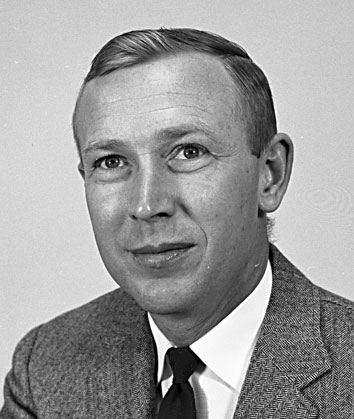
It is with great regret that we report the death of our friend and colleague, former NRAO Director Dave Heeschen on Friday, 13 April.
Dave is recognized as an outstanding scientist, an inspirational leader, and a giant in radio astronomy. During his time as NRAO Director, he built the Observatory into a world-leading organization that offered the science community access to state-of-the-art research facilities.
Dave began his association with Associated Universities, Inc. (AUI) during the early planning process for a national radio astronomy facility. He was an ardent supporter of the national observatories concept and became the third NRAO employee, beginning work 1 July 1956, five months prior to the signing of the AUI contract with the National Science Foundation to build and operate the Observatory. He served as Chair of the NRAO Astronomy Department, as Acting Director from 1961-1962, and as Director from 1962-1978.
Between his arrival at NRAO and the end of his time as Director, NRAO grew from an idea into the world center for radio astronomy. Under his leadership the 140-foot and 300-foot telescopes and the interferometer were completed in Green Bank, West Virginia, and the 36-foot telescope was built in southern Arizona. Probably Dave’s greatest achievement was to obtain the authorization for and overseeing the design and construction of the Very Large Array (VLA) in New Mexico. When he stepped down as Director, VLA construction was nearly complete, science observations were underway, and planning had begun for the Very Long Baseline Array.
Following his resignation as Director, Dave eagerly resumed his research on radio galaxies and AGN, but responded to requests to serve as Assistant Director for Tucson Operations, Assistant Director for Socorro Operations, and as Acting Project Manager during the initial work on the Green Bank Telescope. He retired from NRAO in December 1991, but continued to pursue his research and to advise on NRAO projects.
Born in Davenport, Iowa in 1926, Dave received his B.S. from the University of Illinois in 1949, and a Ph.D in astronomy from Harvard in 1955. He received numerous honors and awards throughout his long career, including the Distinguished Public Service Award from the National Science Foundation, and the Alexander von Humboldt Senior Scientist Award. He was a member of the National Academy of Sciences, the American Academy of Arts & Sciences, and the American Philosophical Society. After retiring, Dave enjoyed time with his family and pursued his non-astronomical interests, including sailing with his friends and family, and amateur radio.
He will be greatly missed by all.
A memorial to celebrate the life of Dave Heeschen will be held at NRAO on May 14.
ALMA Construction Status
Al Wootten and Rich Lacasse

Figure 1: Thirty ALMA antennas at the 5000m elevation Array Operations Site, 13 April 2012. Photo courtesy R.E. Hills.
 Zoom
Zoom
April marked the return of good weather to Chajnantor, with occasional reversions to summer “Altiplanic Winter” conditions. The array is now configured in the extended Cycle 0 Configuration, with baselines to 400m. The Atacama Compact Array also operates in testing mode, along with a 12m antenna from the Total Power Array.
At this writing, Early Science Session 13 observations are in progress, with good throughput. Data from the first extended configurations are being processed and assessed for quality. An early version of a Pipeline, which can perform calibration on newly acquired data, is being installed in Santiago. The standardization that this provides for data products has enabled some data processing to occur at the ALMA Regional Centers (ARCs). Products are copied back to the Santiago Central Office central archive for Program Management Group validation and Quality Assurance; when accepted they are mirrored worldwide. Products are then packaged for distribution to Principal Investigators.
On 10 April, Highway 31 in Kilgore Texas was blocked for the last time by the 26 foot tall and 20 foot wide base of an ALMA antenna. The 25th and final General Dynamics antenna pedestal made its way by truck to the port of Houston, on its 45 day journey to the ALMA Operations Support Facility in Chile for assembly into the final North American ALMA antenna.
Final ALMA Correlator Quadrant Ships to Chile
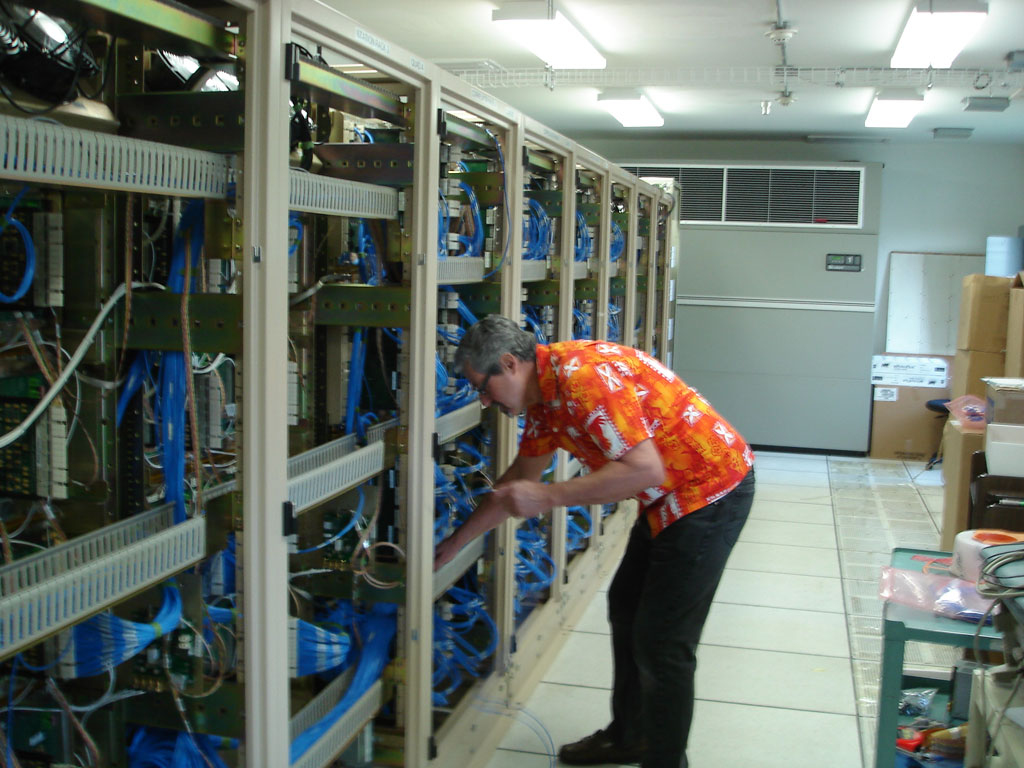
The disassembly process for shipping the correlator took about 3 weeks.
 Zoom
Zoom
April 16, 2012 marked the end of an era at the NRAO Technology Center (NTC) in Charlottesville. The fourth and final quadrant of the ALMA 64-Antenna Correlator was moved out of the “correlator room” in preparation for crating and shipping to the ALMA Array Operations Site (AOS) in Chile.
The original conceptual design for the ALMA Correlator was described by Ray Escoffier in ALMA Memo 166 in 1997. For the last eight years, some part of the Correlator has been resident at the NTC and, with its many blinking LEDs and imposing size, was a highlight of many a tour. In preparation for shipping, over 600 circuit boards and 1000 cables were removed, individually packed, consolidated into boxes and enclosed in 22 crates.
The ALMA Early Science program has been making heavy use of the first two quadrants of this correlator. It is capable of analyzing data for all four baseband pairs of 32 antennas. The third quadrant has been at the AOS since mid-2010 and has been used as an engineering and software test bed. With the addition of the fourth quadrant, the raw compute power for science will double to a rate of 1.7 x 1016 multiply-accumulates per second while processing 6.1 Tb/s from the 64 antennas. However, in addition to raw compute power, users will soon notice additional supported observing modes being brought on line thanks to the efforts of the ALMA Computing IPT and the Commissioning Science and Verification team. For additional mode and technical information see Escoffier et al (2007).
The correlator will arrive at the AOS on 22 May. The tedious reassembly and first round of testing should be complete by the end of June. During the first three weeks of September, ALMA will be shutdown for the purpose of migrating from a two- to a four-quadrant correlator. Most of these three weeks will be dedicated to software testing since this will be the first time all four quadrants have ever been in the same place. By 22 September, the system should be available to the Commissioning and Science Verification team.
Reference
R. P. Escoffier et al, 2007 A&A 462, 801.
This Month @ the NAASC
Cycle 1 Notice of Intent deadline
To help ensure that the observatory is as well prepared as possible to assess the proposals submitted for Cycle 1, Principal Investigators are strongly encouraged to submit a notice of intent by May 15 using the web form. One form should be completed and submitted for each planned Cycle 1 proposal. This should not require more than a few minutes since the information to be provided is minimal. Please note that users need to be registered and logged in to the ALMA Science Portal to access the Notice of Intent form.
ALMA Early Science Cycle 1 Collaboration Opportunities
Astronomers who are interested in establishing collaborations with experienced mm/submm interferometrists for ALMA proposals are welcome to contact ALMA scientific staff. The principal scientific interests of ALMA staff at the Joint ALMA Observatory (JAO) are summarized at JAO Science Staff. Feel free to contact these scientists directly, or contact Ryohei Kawabe for assistance in finding the right person. Access to ALMA expertise is also available directly from the ALMA helpdesk and through training events organized by the ALMA Regional Centers.
ALMA Science Verification Datasets
Several ALMA science verification datasets are available on-line that demonstrate the early capabilities of ALMA. These data were largely observed before 16 antennas were available and while many subsystems were still being tested, and thus they do not represent the Early Science Cycle 0 and Cycle 1 data quality. These data are being provided, however, to enable the user community to become familiar with the ALMA data structure, observing strategies, and reduction techniques. Since these data were acquired during ALMA construction, they may include idiosyncrasies that will not be present during future full operations. Please carefully review the Common Astronomy Software Application (CASA) guides that are provided with datasets that represent unique observing modes or strategies, as indicated below.
The currently available ALMA science verification data includes the following nine datasets:
- TW Hya, ALMA Band 7, high spectral resolution
Additional Band 3 and Band 6 TW Hya data are available, though without a separate CASA guide. - NGC3256, Band 3, low spectral resolution
- Antennae galaxies, Band 7, high spectral resolution
Additional Band 6 Antennae data are available, though without a separate CASA guide. - M100, Band 3, low spectral resolution
- SgrA*, Band 6, recombination lines
- BR1202-0725, Band 7, low spectral resolution
A second data set has recently been posted for this source, which has better observing conditions than the first, but lacks system temperature information. - IRAS16293 Band 6, high spectral resolution
The raw dataset with full spectral resolution has recently been posted, however, be aware that this is a very large file. - Centaurus A, Band 6, high spectral resolution mosaic
- Orion KL, Band 6, high resolution spectral survey
A Commissioning Test dataset is also available to the user community:
- Proof of Concept of Response to Targets of Opportunity, GRB 110715A followup, Band 7, continuum.
The following statement should be included in the acknowledgment of papers using the datasets listed above:
"This paper makes use of the following ALMA Science Verification data: ADS/JAO.ALMA#2011.0.0000X.SV [where X=1 for the TW Hya dataset, X=2 for the NGC3256 dataset, etc.] ALMA is a partnership of ESO (representing its member states), NSF (USA) and NINS (Japan), together with NRC (Canada) and NSC and ASIAA (Taiwan), in cooperation with the Republic of Chile. The Joint ALMA Observatory is operated by ESO, AUI/NRAO and NAOJ."
User Training Opportunities
Proposal Preparation Training
NRAO invites participation in one or more of several tutorials and hands-on training sessions to be held for both in-person attendees and for remote attendance by webinar on 11-12 June 2012 in Charlottesville. Hosted by the North American ALMA Science Center, the event will provide opportunities to learn about the capabilities of the Atacama Large Millimeter/submillimeter Array (ALMA) for Early Science Cycle 1 observing, the Jansky Very Large Array (JVLA), the Green Bank Telescope (GBT) and the Very Long Baseline Array (VLBA). Participants will also have the opportunity to walk-through proposal preparation for any of the telescopes using the Observing Tools, and the generation of simulations of planned observations. An agenda and registration instructions for the events is available online.
Scientific Staff Availability for Observing Tutorials
The NRAO offers a limited opportunity to request one of our expert observers to visit universities and research institutions around the country for a day, to present short tutorials and hands-on training sessions on the capabilities of the NRAO observing facilities and the preparation of proposals. Please contact Carol Lonsdale with enquiries of interest.
2012 Jansky Lectureship
Chris Carilli and Fred K.Y. Lo
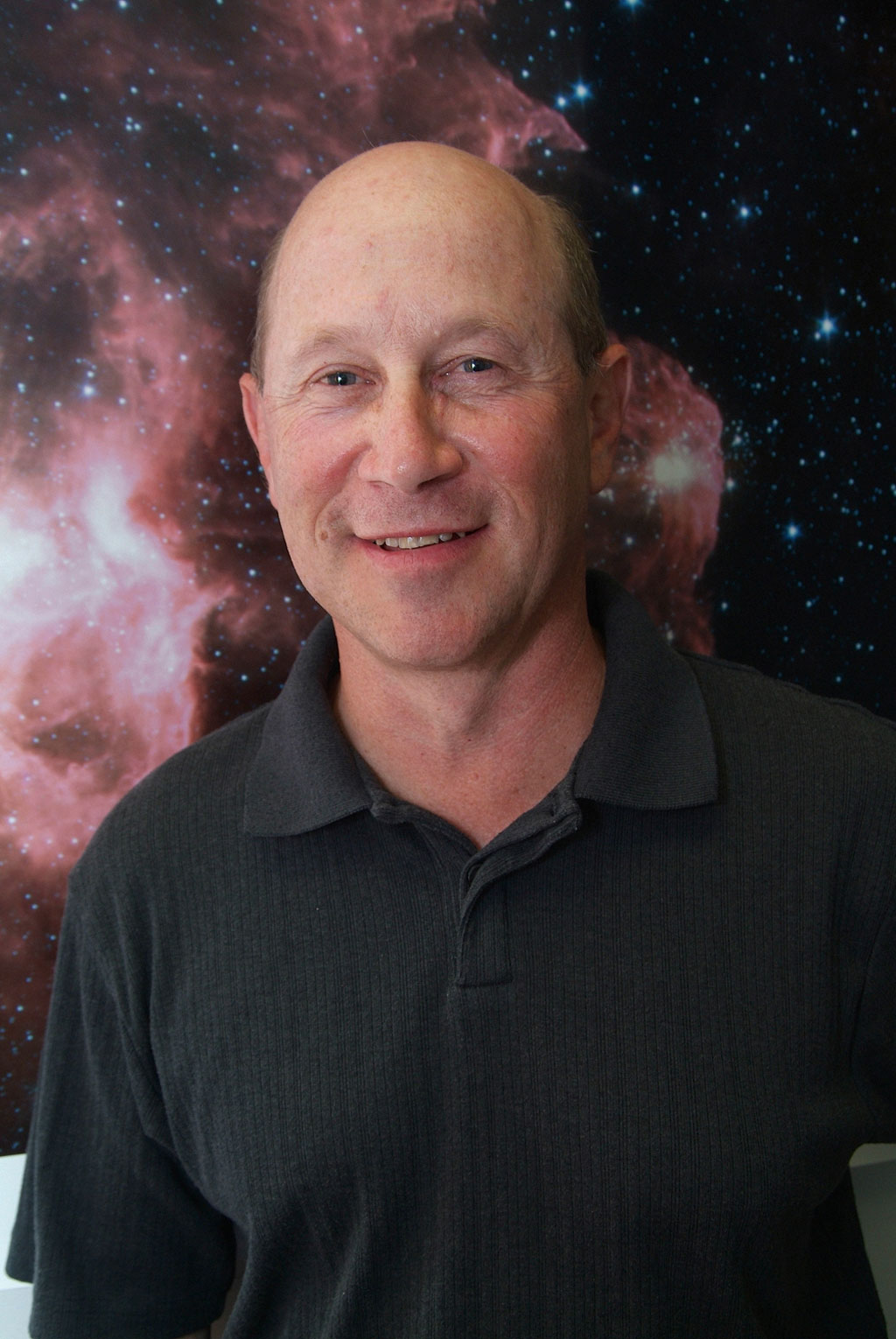
The 47th annual Jansky Lecture will be given by Dr. Mark J. Reid of the Smithsonian Astrophysical Observatory. Dr. Reid is being honored for his pioneering work in Very Long Baseline Interferometry (VLBI) as applied to numerous key problems in astrophysics.
Reid received his Ph.D. in Planetary Science and Astronomy from the California Institute of Technology in 1975, where he worked with D. Muhleman on the first VLBI imaging studies of OH maser emission in the envelopes of variable stars. He then moved to the Harvard Smithsonian Center for Astrophysics (CfA) as a Center Fellow. In the late 1970's he was on the scientific staff at the NRAO, and then returned to the CfA, where he is a Senior Astronomer in the Radio and Geoastronomy Division.
Reid has been a world leader in the development and application of VLBI. He is widely recognized as the father of ultra-high precision VLBI astrometry, and he has used these techniques to answer some of the most important questions in astrophysics.
Reid has done definitive imaging of the parsec-scale structure of the relativistic jet in the massive galaxy M87. He also developed VLBI of spectral lines from natural molecular maser sources found around newly formed stars into a high precision tool for the study of these interesting sources. Perhaps his greatest contribution has been in the field of Galactic Structure. Reid has made some of the most accurate measurements of the distance to the Galactic center. His accurate position and proper motion measurements of the radio source at the Galactic center firmly established the existence of a supermassive black hole at the very center of the Milky Way galaxy.
Most recently, Reid's studies of maser emission from star forming regions has led to a detailed understanding of our Galaxy's three-dimensional structure. This work has revised the Galactic rotation velocity, thereby re-defining the mass of the Milky Way. Reid has also played a key role in the first direct measurements of proper motions of Local Group galaxies - a technique that has the potential to revolutionize our understanding of the mass distribution within the Local Group and its Dark Matter content.
Reid has received numerous awards, including a Senior Award from the Alexander von Humboldt Society and the Beatrice Tinsley Prize for outstanding career contributions from the American Astronomical Society. We are pleased to have a scientist of his stature for the 2012 Jansky Lectureship, and we look forward to his visit and presentation this fall.
NRAO Postdoctoral Symposium
Nirupam Roy
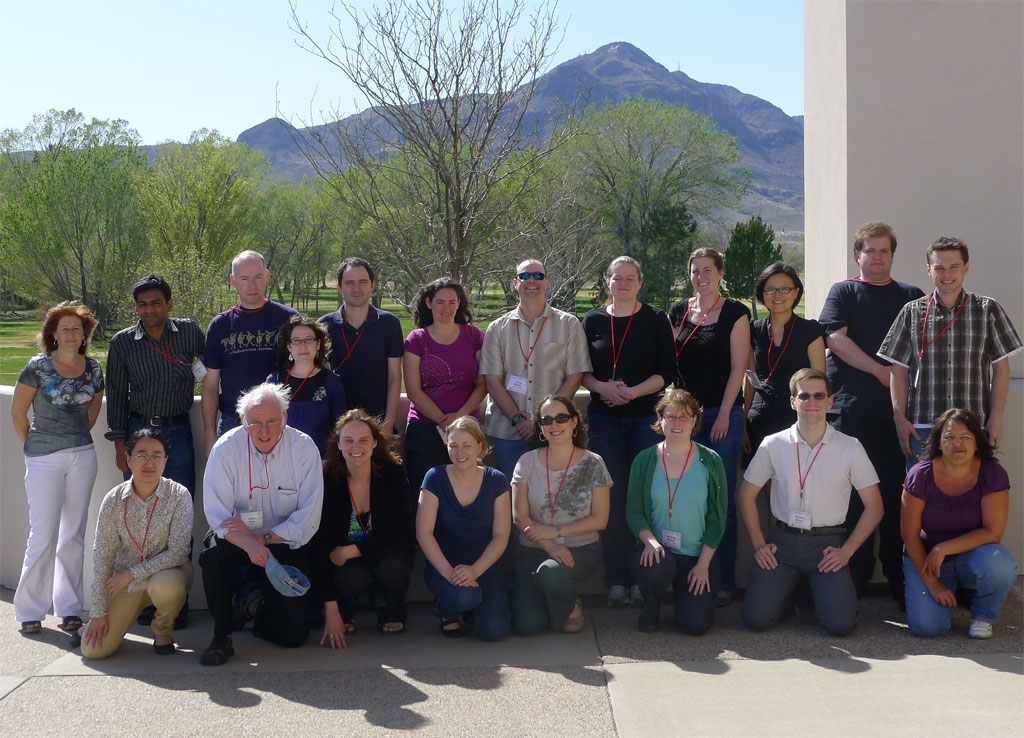
 Zoom
Zoom
The 8th NRAO Postdoctoral Fellows Symposium was held at the Domenici Science Operations Center in Socorro, NM on 26-28 March. This annual event brings together all the NRAO postdocs, including the non-resident and resident Jansky fellows, to highlight their current research, share ideas, and establish collaborations. There were 25 participants this year, including 15 NRAO postdocs. Keynote speaker Yancy Shirley (former NRAO Jansky Postdoc, currently at Steward Observatory, University of Arizona) presented an exciting talk on "Bolocam Galactic Plane Survey: A census of embedded star formation in the Milky Way". Rick Perley gave a review talk on the Jansky Very Large Array capabilities, scientific prospects and possibilities in the near future before a tour to the telescope site. With spontaneous participation and interaction, an impressive diversity of the presentation topics – from asteroids and comets to star formation in high redshift galaxies, and adequate time for social events – the three-day symposium was very enjoyable and a great success.
CASPER Workshop
John Ford
The Collaboration for Astronomy Signal Processing and Electronics Research (CASPER) will hold the annual CASPER workshop at the NRAO Green Bank facility 13-18 August 2012. The workshop will include sessions on science with CASPER instruments, new instrument development, and plans for future development of the CASPER digital signal processing hardware as well as software tools. A session with industry representatives will be organized to convey the latest information on developments in signal processing and computing.
The primary goal of CASPER is to streamline and simplify the design flow of radio astronomy instrumentation by promoting design reuse through the development of platform-independent, open-source hardware and software for FPGA, GPU, and heterogeneous digital signal processing hardware.
Hands-on tutorials, from beginner to advanced, will be held in the afternoons at the computer laboratory at the Green Bank Science Center. These tutorials will allow users to build and test FPGA and GPU based instruments in the lab.
Housing will be available on site. Some travel support for students will be available.
A CASPER 2012 website is under construction and will soon include a call for papers and posters, along with other information.
First Wide-bandwidth VEGAS Observations
Glenn Jones (NRAO/Caltech) and Andrew Siemion (UC Berkeley) on behalf of the VEGAS team
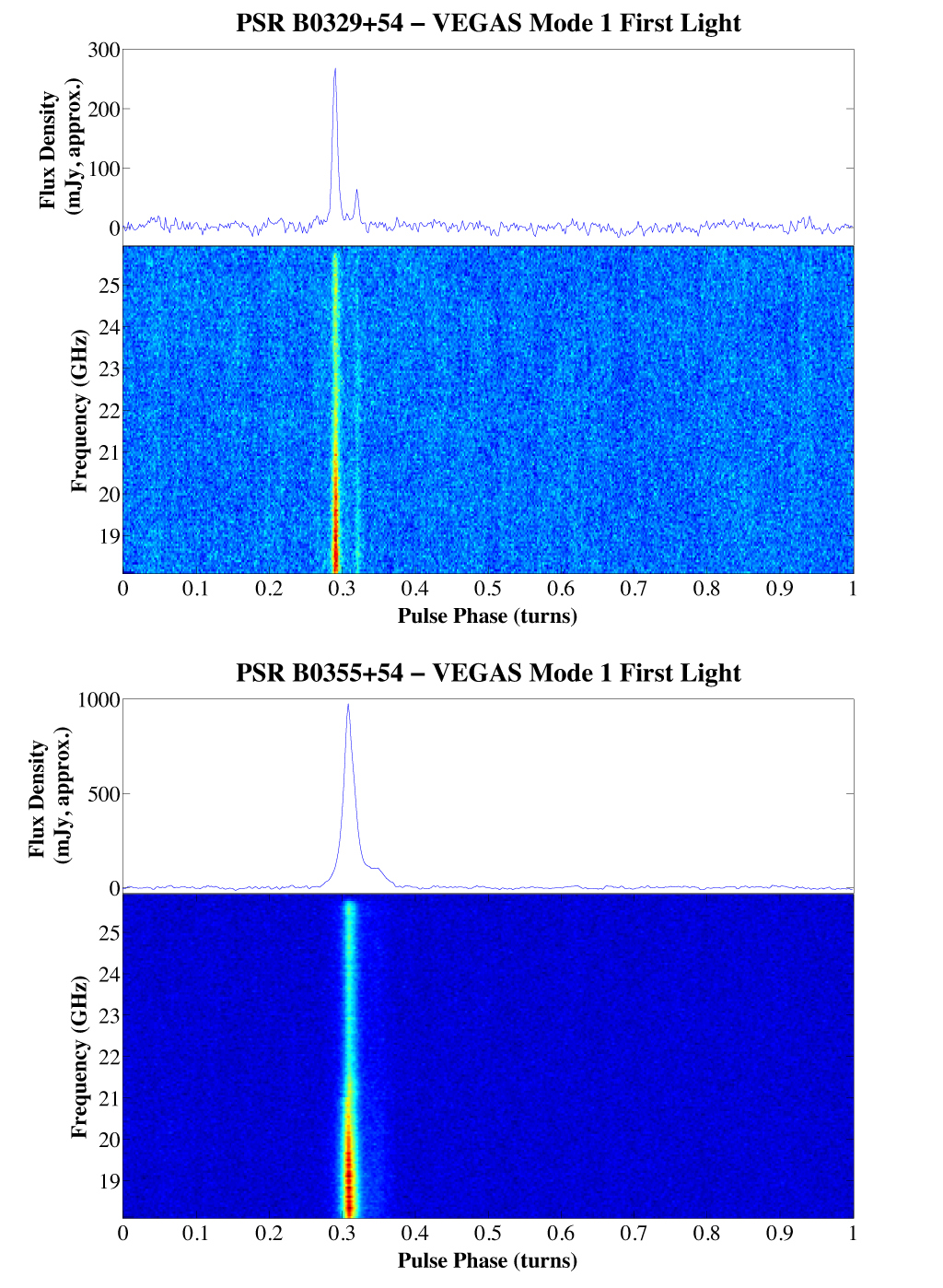
Figure-1: Test VEGAS observations of the bright pulsars B0329+54 (top) and B0355+54 (bottom).
 Zoom
Zoom
Rapid development of the new Versatile GBT Astronomical Spectrometer (VEGAS) continues. This past March, the VEGAS team, including local NRAO staff and members from UC Berkeley and West Virginia University, met in Green Bank to test an expanded prototype of the system. Eight ROACH FPGA boards and eight host computers were assembled to perform extensive system integration tests as well as to test and characterize the wide bandwidth capabilities that the spectrometer will provide. Test observations were performed to demonstrate the ability to process the entire 8 GHz band (spanning 18 to 26 GHz) provided by the central beam of the K-band Focal Plane Array (KFPA). In the present configuration, each ROACH board produces a 1024-channel, full Stokes spectrum with 1300 MHz of usable bandwidth. Thus the whole system can provide an aggregate bandwidth greater than 10 GHz. The spectrometers support integration times as short as 500 microseconds. Test observations were made on the bright pulsars B0355+54 and B0329+54 (see Figure) to demonstrate the utility of the system for high frequency, wide bandwidth pulsar observations. This high frequency pulsar capability will be used to perform the most sensitive search yet for pulsars near the galactic center. The sensitivity of the KFPA and the spectrometers was also measured on the continuum calibrator source DR21. Development of the high-resolution spectral line modes will continue through the summer.
Breaking the Data Speed Limit with the Jansky VLA
Casey Law, Geoffrey Bower (UC Berkeley); Martin Pokorny, Michael Rupen, Ken Sowinski (NRAO)
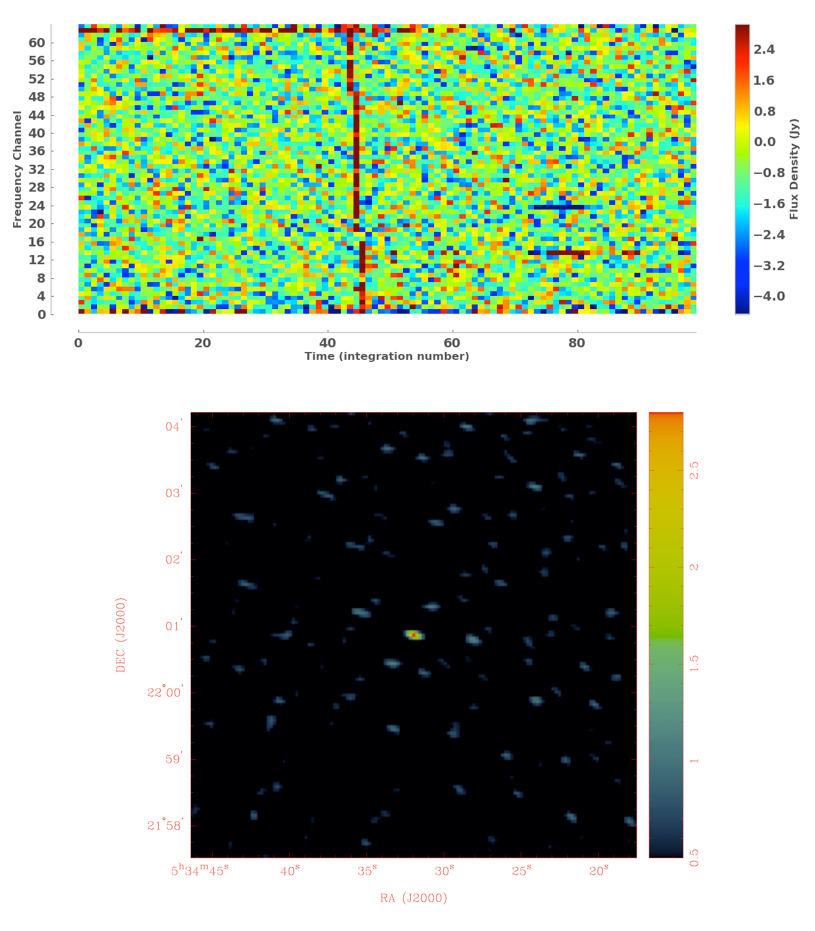
Figure-1: (top) A dynamic spectrum formed from Jansky VLA visibilities at a time resolution of 10 ms. A pulse from the Crab pulsar is seen with its characteristic dispersion. Selecting visibilities for that dispersed pulse, we can use the imaging capabilities of the Jansky VLA to localize the pulse to arcsecond precision (bottom).
 Zoom
Zoom
If you were to drive I-25 in New Mexico, road safety demands that you go no faster than 75 miles per hour. "Driving" the Jansky VLA (JVLA) correlator is also limited, although in this case by networking, computation, and archiving requirements. Coincidentally, the JVLA data speed limit was set at 75 MB/s. In practice, the correlator ran no faster than about 25 MB/s, roughly the speed (in miles per hour) of a fast cyclist. Recently, as part of an experimental observing mode, we broke both of these speed limits by writing data at a rate of 110 MB/s.
This record-breaking speed was set as part of a Resident Shared Risk Observing (RSRO) project to record fast integrations with the JVLA correlator. This optimized mode ran at 1/4 of network capacity to the archive and nearly 1/2 the limit into each compute node of the correlator backend. As this speed test was run in a special mode – the Bonneville Salt Flats of correlator modes, if you will – it is not generally available. However, this work is pioneering high data rate observing modes (e.g., fast integrations, large spectra) that are in demand at the JVLA and will be critical to the development of the SKA.
The goal of this RSRO project is to open the world of millisecond radio transients to interferometers. These fast transients have traditionally been studied with large, single-dish telescopes. Since interferometers correlate signals from all pairs of antennas (the JVLA has 351 such pairs), they tend to produce data at a larger rate than single-dish telescopes. Until recently, that made the study of fast transients with correlated data from an interferometer impossible. The latest speed record means that the JVLA can now write correlated data products as fast as once every 10 ms.
Since each integration can be used to image the sky, this observing mode effectively turns the JVLA into a high-speed camera. At 10 ms time scales, we are sensitive to fast pulses from neutron stars, such as pulsars. It also makes it possible to measure dispersion, the frequency-dependent delay introduced by cosmic ionized gas. Dispersion lets us measure the electron density between us and a transient source, which can be used to estimate distances. Thus, imaging a transient and measuring its dispersion makes it possible to localize it in three-dimensional space. This simplifies the search for multi-wavelength counterparts for any transient, whether it be a new pulsar, a transient in another galaxy, or a hot Jupiter orbiting a nearby star.
Our first science goal for this observing mode is to image a millisecond pulse from rotating radio transients (RRATs). Since RRATs are typically discovered by single-dish telescopes, their position is not known better than a few arcminutes. This is too poor to find unique counterparts in arcsecond-resolution X-ray data; such counterparts are critical to understanding the nature of a RRAT. RRATs pulse very rarely, so it has been difficult to use traditional pulsar timing techniques to measure their position to arcsecond precision. As shown in the figure, the JVLA can image individual pulses from a RRAT to measure their location to arcsecond precision with a single pulse detection.
Imaging with interferometers could revolutionize the study of millisecond transients, but only if we can manage the associated massive data volume. One solution to the "big data" problem is to enable real-time analysis. If one can find a transient in real time, then there is no need to save all data; just save the data that contains the science. In Law & Bower (2012), we describe a new, computationally-efficient algorithm that makes real-time detection possible with an interferometer. This opens the possibility of commensal, 24/7 searches for transients with radio interferometers. If this technique works well, it will unleash the latent survey capacity of the JVLA and other arrays, opening new views of the transient universe.
References
"All Transients, All the Time: Real-time Radio Transient Detection with Interferometric Closure Quantities", C. J. Law & G. C. Bower, 2012, ApJ, 749, 143
VLBA Upgrade News
Jon Romney, on behalf of the VLBA Upgrade team
Scientific observations with the new wideband system
Commissioning of the VLBA's new 2-Gigabit/sec (Gbps) recording rate, which began about mid-2011, achieved an acceptable success rate in recent months, and the first stand-alone scientific observations began in February. This capability supports a bandwidth of 256 MHz/polarization in a typical dual-polarization case. Proposed observations that require such bandwidths for scientific success are currently being carried out at a rate of one or two per week. The theoretical two-fold reduction of image noise, relative to the 64 MHz/polarization maximum bandwidth supported by the legacy data transmission system, has been demonstrated several times. Beyond the direct benefit for studies of faint continuum sources, this enhanced sensitivity will be advantageous for astrometric research on spectral line sources, by enabling selection of fainter, and thus closer, continuum reference calibrators.
The FPGA firmware supporting this initial capability is a Polyphase FilterBank (PFB) implementation developed jointly by Haystack Observatory and NRAO. The current version has performed stably and correctly since it was installed in October 2011. Sixteen sub-bands, of 32-MHz bandwidth each, can be placed anywhere on a 32-MHz grid within the 512-1024 MHz IF bands, in either polarization. Two common dual-polarization configurations are: (1) a compact scheme with eight contiguous sub-bands in each polarization; and (2) a spanned-bandwidth version with eight sub-bands, alternating in a 64-MHz spacing, in each polarization. The combination of gridded sub-band locations within the IFs, and the VLBA's current first-LO generation scheme, make the PFB somewhat inflexible, but it has been used successfully in frequency bands ranging from 1.6 GHz upwards. In addition to the primary signal path, the firmware supports switched-noise detection for continuous system temperature measurement.
Questions related to use of the 2-Gbps system should be addressed to the NRAO Helpdesk.
The limited fraction of current wideband observations, indicated above, arises from an unexpectedly high failure rate of the 2-Terabyte (TB) disk drives that comprise the high-speed, high-capacity 16-TB recording modules required for 2-Gbps recording. NRAO reported this problem to our vendor in December, who then consulted with the manufacturer. A remediation process is currently under way, in which disk drives on a list of suspected failure-prone units are extracted as the modules circulate through the correlation facility, sent to the vendor for extensive testing, and then either returned or replaced with new drives provided by the manufacturer. It may take some time to complete this process, or even to determine whether it is effective. While it continues, the media available for wideband observations are limited to a reduced pool of well-tested modules.
Development of a second FPGA firmware implementation continues at NRAO. This Digital DownConverter (DDC) currently supports four sub-bands, individually selectable between polarizations, tunable with a very fine frequency quantum and selectable sidebands. Sub-band bandwidths ranging downwards in binary steps from 64 MHz to 250 kHz have been tested; much narrower bands can be obtained using the DiFX correlator's "spectral zoom" capability. While still under development, the DDC has made substantial progress toward an operational system in recent months. Improved switched-noise detection, used for setting of thresholds in the 2-bit requantizer in addition to system temperature measurement, has been implemented. Ongoing developments include a 128-MHz sub-band bandwidth, with which this system could support an aggregate 2-Gbps output, and thus serve as an alternative to, and eventually a replacement for the PFB. Complex-valued sampling, also under study, is expected to enable more efficient use of FPGA digital resources, possibly enough to enable a full 8 sub-band configuration.
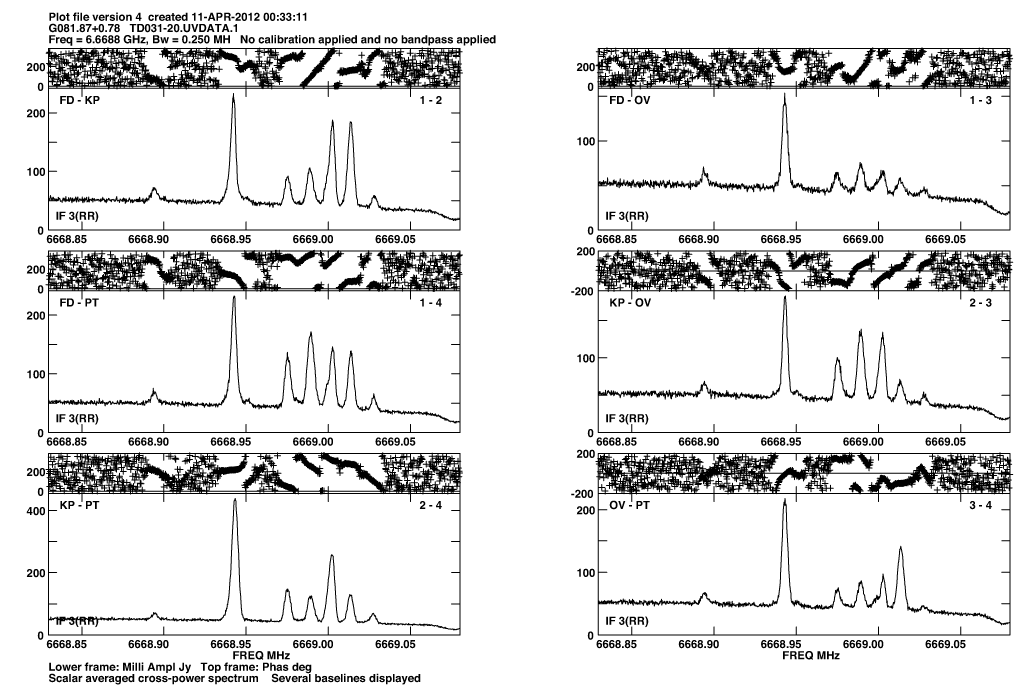
Fringe amplitude and phase over a 250 kHz bandwidth in a 6-minute integration on G081.87+0.78.
 Zoom
Zoom
First 6.7 GHz methanol-maser fringes detected with new C-band receivers
New 4-8 GHz receiver systems are being installed across the VLBA, made possible by the provision of VLBA operating funds by the Max-Planck-Institut für Radioastronomie (MPIfR). Six stations have now been completed, with the full 10-station capability scheduled for August. Scientific observations using the new C-band system will begin in semester 2012B. A comprehensive article on this C-band upgrade appeared in NRAO eNews issue 4.12, including a single-dish spectrum of the 6.7-GHz methanol maser line.
The primary scientific motivation for the upgrade is to enable studies of Galactic structure using VLBA-based astrometry of high mass star forming regions traced by that maser. It typically is 1-2 orders of magnitude stronger than the 12.2-GHz maser of the same molecule, and thus can be used to measure parallax distances with good accuracy even beyond the Galactic Center. In addition, it is intrinsically less variable than other strong masers, such as water, which is an important consideration for parallax measurements that require a minimum of one year to complete.
The VLBA's first fringes in the 6.7-GHz methanol line were detected at the end of March, using upgraded receiver systems at four stations. Figure 1 shows fringe amplitude and phase over a 250 kHz bandwidth in a 6-minute integration on G081.87+0.78.
Recent Press Releases
 ALMA Reveals Working on Nearby Planetary System
ALMA Reveals Working on Nearby Planetary System
12 April 2012
A new observatory still under construction has given astronomers a major breakthrough in understanding a nearby planetary system that can provide valuable clues about how such systems form and evolve. The scientists used the Atacama Large Millimeter/submillimeter Array (ALMA) to discover that planets orbiting the star Fomalhaut must be much smaller than originally thought. Read More …
Career Opportunities
New Postings
ALMA CSV Project Scientist: The Joint ALMA Observatory (JAO) in Santiago, Chile is recruiting for a CSV Project Scientist. He/she will be responsible for planning, organizing and ensuring the successful implementation of the commissioning and science verification of ALMA. The incumbent will report directly to the ALMA Director and interacts closely with the ALMA Chief Scientist, the Head of Science Operations and ALMA Construction Project personnel. The CSV Project Scientist is a member of the JAO Core Management Team.
CASA Developer: The NRAO in Charlottesville, Virginia invites applications for a software developer to assist in the optimization of the Common Astronomy Software Applications (CASA) package for efficient reduction and analysis of scientific data. The successful candidate will be a member of an international team and will interact closely with the rest of the CASA development team to provide efficient, optimized, and robust data reduction and analysis software to the worldwide community of users.
Data Analyst: The NRAO in Charlottesville, Virginia is seeking a Scientific Associate to provide assistance to observatory users in the accomplishment of their observing goals. He/she will prepare reports as needed, maintain, review and edit user documentation (including web pages and wikis), and help staff and users with other data support services as needed, including but not limited to, the testing of pipelines, the quality analysis of pipeline data products and archive access.
Software Engineer II: The NRAO in Socorro, NM is recruiting for a Software Engineer II. Initially he/she will work with other Scientific Support System group members and Open Sky staff to re-insource the Proposal Submission Tool (PST), User Database (UDB), and portal development and maintenance to the NRAO. The Software Engineer will work with our database administrator (DBA) on database issues as well as with our web master on issues like hosting and deploying the PST and portal.
Web Developer: The NRAO in Charlottesville, Virginia is accepting applications for a Web Developer. The Web Developer will be responsible for developing, testing, implementing, and supporting the NRAO science and staff websites. Working as part of the NRAO web team: (1) develop web-based interactives, products, and mobile device applications; (2) administer content management system for the science and staff sites; (3) define and codify technical requirements for products; and (5) maintain a broad knowledge of browser capabilities and web development trends.
Assistant Director, ALMA North American Operations: The NRAO in Charlottesville, Virginia is seeking an Assistant Director for ALMA North American Operations to ensure ALMA NA operations achieve maximum scientific and cost effectiveness of ALMA, and to work in close coordination with the NRAO Director.
Assistant Director, Coordinated Development Lab: The NRAO in Charlottesville, Virginia is recruiting for an Assistant Director for its Coordinated Development Laboratory (CDL). The Head of the Observatory-wide CDL will provide vision and leadership and address key technical challenges of the next generation of instruments while maintaining the performance of current NRAO facilities at state of the art.
Pipeline Engineer: The NRAO in Charlottesville, Virginia is accepting applications for a scientific software developer to assist in the development of software to script and schedule data processing and reprocessing pipeline runs on the NAASC computing cluster, including the development of a web-based interface within which users will specify parameters with which to run the pipeline.
From the Archives
Ellen Bouton

About this month's photo: As a follow-on to last month's photo of the Charlottesville computer room in 1960, we present an early commentary on data storage at NRAO. This memo, affectionately known as "the tape memo," outlined procedures and protocols for the multiple users who stored files on a MTA-2 magnetic tape unit. By mid-2013, NRAO expects to be aggregating two petabytes of data per year.
Thanks to Barry Clark, who kindly provided the following additional information about the Charlottesville computer room in 1960: "The machine was a System 360 Model 50. The Mark I VLB correlator ran on this machine, at about eight or ten times slower than real time – not real swift. I hadn't remembered the front panel having so many lights. At any rate, it was the first front panel I encountered on which the lights were utterly meaningless except to a maintenance engineer. The console was not a teletype. It was a modified IBM Selectric typewriter. A great advance over the teletype. You could type as fast as you wanted - on the teletype, you had to adapt your rhythms to the machine."
From the Archives is an ongoing series illustrating NRAO and U.S. radio astronomy history via images selected from our collections of individuals' and institutional papers. If readers have images they believe would be of interest to the Archives, please contact Ellen Bouton, ebouton@nrao.edu.

